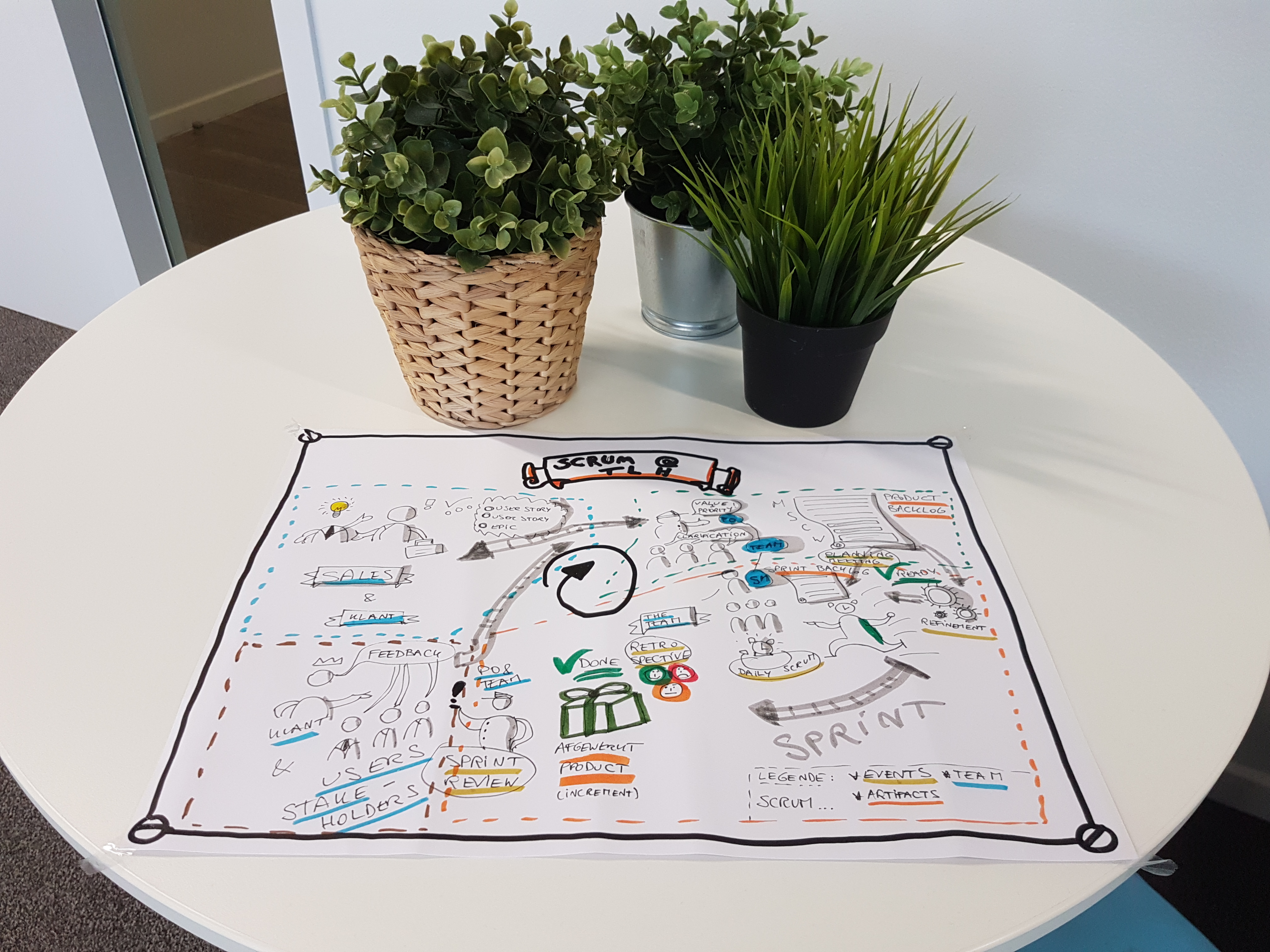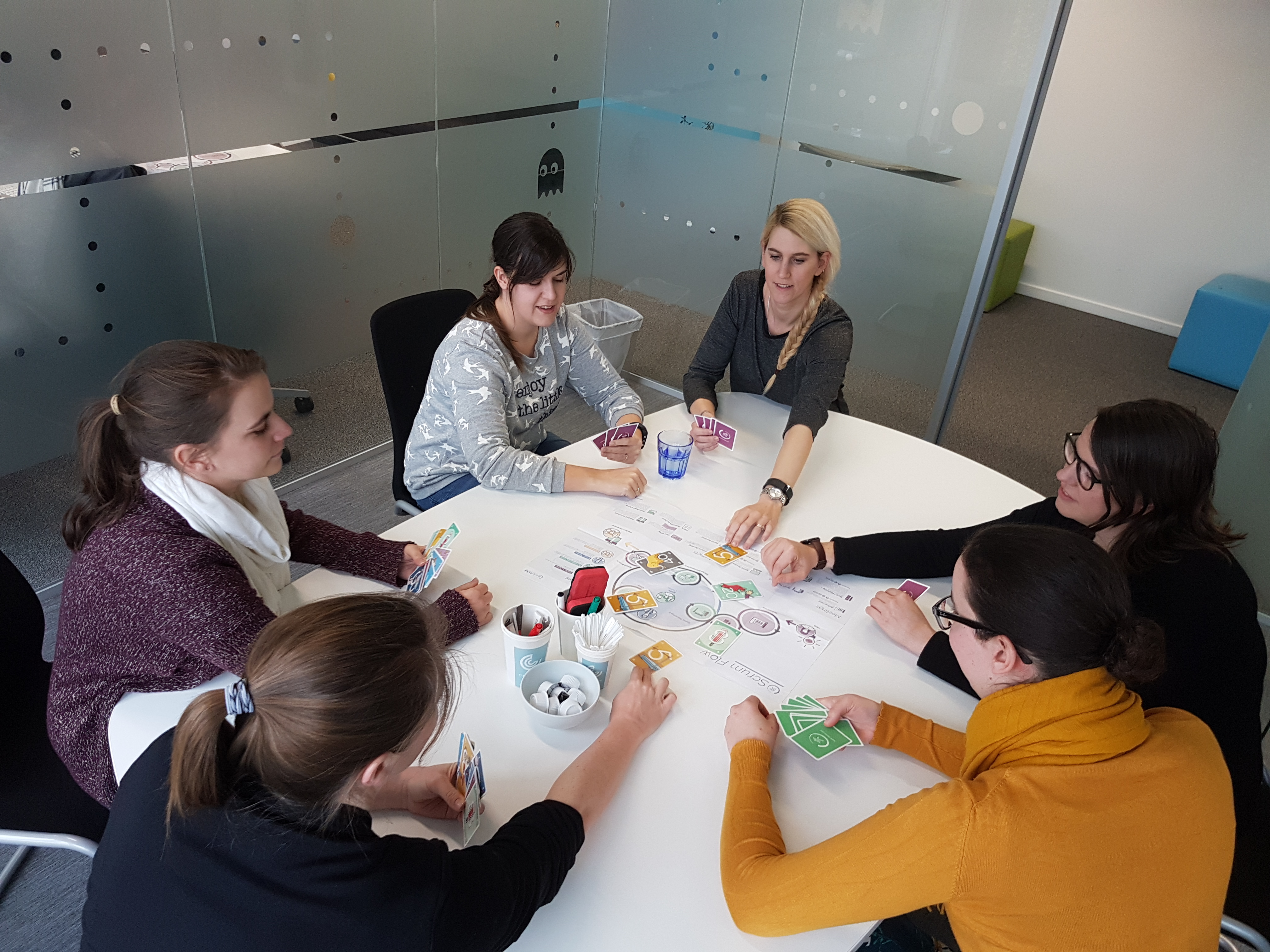Every now and then we take the time to reflect on how we are doing, as a company, as individuals within the company and as a team. At the end of 2017, we all agreed: we are doing a great job, but perhaps we can still enhance our way of working. We decided to take action.
Goals
We defined 3 goals:
- Working as a team, rather than individuals within a team
- Open and transparent communication
- Ownership of all projects
Starting January 2018, we use the Scrum framework to manage our projects. We no longer talk about ‘my’ projects and ‘tasks’, but ‘our’ projects and ‘User Stories’. We call ourselves ‘Team Awesome’ and I have to say after 3 months… we truly are an awesome team!
Our Scrum way of working
Let me explain our Scrum way of working. It’s a Friday morning at the Learning Hub headquarters. At 9.30 a.m., we get together in a meeting room. We open our Sprint Board – that’s a digital ‘dashboard’, with columns ranging from ‘to do’ to ‘done’ and all the stages in between (‘ongoing’, ‘testing’,…). All the things we’re working on during one week, are represented by a card. In an ideal situation, by Friday morning we have finished everything we planned to do this week. All the cards, with User Stories on them (the ‘tasks’, but described from an end-user’s point of view) are located in the column ‘done’. We demonstrate the User Stories we completed. This is called the ‘Review Meeting’. We have about 1 hour to demo and discuss the content.
Look back
After that we have our 30 minute ‘Retrospective Meeting’, where we look back at how the Sprint went. This meeting allows us to discuss issues we encountered during the week, talk about our worries and doubts,… But it’s also the perfect moment to give each other a well-deserved thumbs up and discuss what went well. That way, we continuously improve our way of working. During this meeting, we accomplish one of our goals: open and transparent communication.
Mmm… Coffee…
By now it is almost 11 a.m., and at The Learning Hub this means: time for a break with a nice cup of coffee and a cookie (for those team members with a sweet tooth). Then it’s back to business: time for our next Scrum meeting.
Exit tasks, enter user stories
Next up, we have the most important element of the Scrum framework: Sprint Planning 1. To be honest, the first time we held a Sprint Planning meeting, it felt like it was never-ending. We had to become more familiar with the way of thinking: in terms of user stories instead of tasks. But just 3 months later, we do it super efficiently.
Planning poker
We continue by discussing the available user stories, one by one, in order of importance. We discuss the effort we think we’ll need to put in (in hours) in order to complete each user story, and we challenge each other on that – that’s called ‘planning poker’. Using a deck of cards, designed specifically for Scrum, every team member estimates each user story. If colleague A estimates she needs 8 hours to complete the user story, and colleague B says she needs 3 hours, both of them need to elaborate on their choice.
At first, these estimations were really hard, but just discussing them openly within the team, often lead to knowledge sharing or best practices, which is always interesting. A lot of ‘what ifs’ were brought to the table. What if we do it this way? What if the content we received wasn’t sufficient? What if… Then, we continue adding User Stories from the backlog to the Sprint, until we reach our team’s capacity. Is it always easy? No, definitely not. We all have a different way of working, different expertise and different approaches. But we’ve noticed that this way of working allows us to challenge each other and learn from each other, which benefits everyone in the long run!
3 months later, the “what ifs” happen less frequently. Because of our constant (in depth) communication in our daily stand-ups and the co-ownership of project, the goals, acceptation criteria (“When is the project finished?”), and progress of each project become clearer. Everyone is up-to-date all the time, without much effort. Although it may look like we spend a lot of time in meetings, that’s really not the case. Basically, all of our meetings take up half a day on Friday – the rest of the week, we can focus on the job.
Team Awesome takes over
12 a.m. already? Time to grab some lunch! After the lunch break, we have one final meeting with just the team members: Sprint Planning 2. The PO (Product Owner) leaves the room and the team divides the User Stories for the next Sprint into concrete tasks. We assign these tasks to a team member, by mutual agreement.
Finished! Everyone returns to their desks and gets to work.
3 months later…
Is the whole Scrum framework all sunshine, lollipops and rainbows? Of course not! We still have our questions and “pitfalls”. But we already notice improvement in our way of working, and we’re achieving our goals. Now it is just a matter of maintaining this progress and striving for more. We aim to make this Scrum framework a real The Learning Hub framework, adapted to our business. To be continued!


